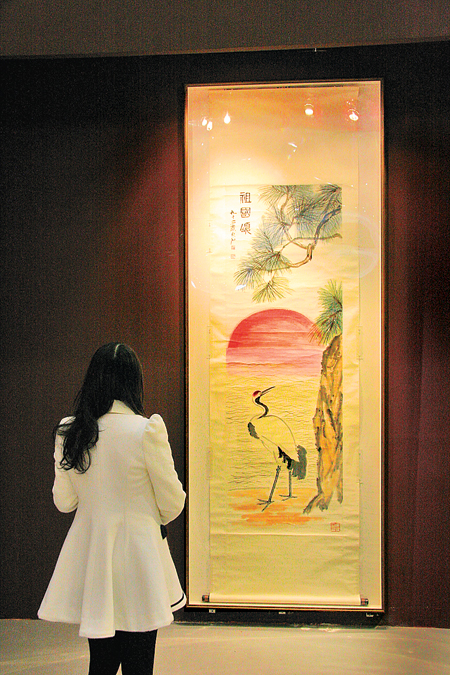
 'Taken 2' grabs movie box office crown
'Taken 2' grabs movie box office crown
 Rihanna's 'Diamonds' tops UK pop chart
Rihanna's 'Diamonds' tops UK pop chart
 Fans get look at vintage Rolling Stones
Fans get look at vintage Rolling Stones
 Celebrities attend Power of Women event
Celebrities attend Power of Women event
 Ang Lee breaks 'every rule' to make unlikely new Life of Pi film
Ang Lee breaks 'every rule' to make unlikely new Life of Pi film
 Rihanna almost thrown out of nightclub
Rihanna almost thrown out of nightclub
 'Dark Knight' wins weekend box office
'Dark Knight' wins weekend box office
 'Total Recall' stars gather in Beverly Hills
'Total Recall' stars gather in Beverly Hills
Falling sales paint a bleak picture for China's art market
Updated: 2013-03-29 10:43
By Zhang Yuchen (China Daily)
|
||||||||
 |
|
A woman examines a painting by Qi Baishi at last year's Beijing Poly autumn auction. Provided to China Daily |
Not good enough
"The rapid exhaustion of sources (for works of art) is thought to be the main factor restricting the development of the market and it cast a gloomy aspect over everything last year," said Liu Shangyong, manager of Rongbao Auction Co in Beijing, at an annual forum held by Zhilan Yaji, a club for art collectors and dealers in December.
A shortage of good sources frustrated the auctioneers who were forced to trawl through sources in more than 10 countries in Asia and Europe in their quest for items good enough to place in their auctions, according to Liu.
China's art market has witnessed wide fluctuations in the number of items and prices, hitting a peak in the 2011 spring season when the trading volume reached 42.84 billion yuan. Since then, however, the total amount of cash and the number of sales have declined.
"Awareness of the value of an art work, and the prices people are willing to pay, reflect on the country's appreciation of fine arts," said Liu Xirong, an art investor known for his collection of ancient brass pots. China's economic plan is set in a 10-year cycle, but each international cycle lasts about 20 years. That's troubling, because investment in art works is quite closely linked with the economic cycle, and people's perceptions of value double every time a piece of work is offered for resale."
While China Guardian has managed to keep its head above water, other large auction houses, such as Beijing Poly, Christie's and Sotheby's, saw their revenues fall by around one-fifth year-on-year in 2012, according to Guan.
Most Viewed
Editor's Picks

|

|

|

|

|

|
Today's Top News
Boston bombing suspect reported cornered on boat
7.0-magnitude quake hits Sichuan
Cross-talk artist helps to spread the word
'Green' awareness levels drop in Beijing
Palace Museum spruces up
First couple on Time's list of most influential
H7N9 flu transmission studied
Trading channels 'need to broaden'
US Weekly

|

|








